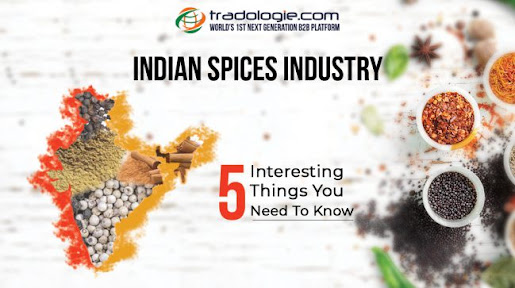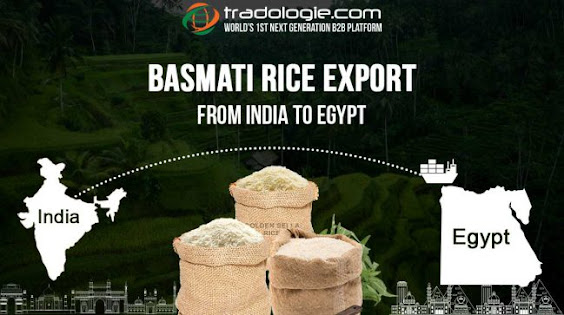Indian Spices Industry: 5 Interesting Things You Need To Know
A spice is a seed, fruit, bark, root, or other plant substance used for flavoring or coloring food. Spices are different from herbs, which are the leaves, flowers, or stems of plants used for flavoring or as a garnish. In India, spices are considered as warm and “Masaley”. The Indian spices industry is one of the biggest industries in the world that makes it the biggest producer and one of the largest exporters across the globe. According to the latest research, India has exported spices worth US$ 3.63 billion in 2020 through various digital e-commerce B2B platforms.
Indian spices are specialized in keeping the human body’s temperature normal and it has become a staple essential when it comes to food. Indian organic spice farming is becoming popular in the world. India has the biggest and appropriate farms for the cultivation of Spices. There are major states that are especially known for spice cultivation like Punjab and Assam are popular for “Aniseed”, Kerala and Tamil Nadu are famous for “Vanilla”, and “Turmeric” is cultivated in Bihar and Tripura and many more. Hence, India is a land of spices and has always been a land of multi-cuisine. The kind of cuisine you taste in south India is totally indifferent to what you taste in the north, while east and west are considered for their own delicious taste. Hence, India is a land of spices and has always been a land of multi-cuisine. The Indian spices are the solemn fact for why India, although one land, has multiple areas for the cultivation of different spices according to their appropriate atmosphere.
Here Are 5 Interesting Things, You Must Know About the Indian Spices Industry:
1 – The Annual Production of the Indian Market:
Since India is one of the largest producers of spices in the world, its annual production is kept increasing for the last couple of years. In the fiscal year 2019-20, its total production of spices was about 9,217 thousand metric tons in volume. Whereas in 2020-21, the production of spices was valued at around 19 billion US dollars, which is much higher than what it was in 2019. The following reasons kept India increasing its production:
- Indian manufacturers of spices are associated with E-Commerce B2B Platforms.
- Indian exporters of spices are in a tremendous demand for keeping the supply chain and exports intact during the pandemic period too by exporting their spices through Digital platforms.
- Indian spices occupy an 82.43% appreciating area in the production of the global spices market as India holds 75 kinds of spices out of 109 varieties of international spices according to International Organization for Standardization (ISO).
- During FY20, India’s chili export stood at 497,550 tons, cumin export at 206,400 tons, turmeric export at 175,600 tons, and cardamom export at 930 tons. The total spices export from April 2020 to February 2021 was US$ 3.56 billion dollars. Hence, India is relevant in terms of spice exportation.
2 – Variety of Indian Spices:
Spices are used as staple dietary additives since ancient times. The study explores that India is the home to various useful spices like turmeric, clove, coriander, cardamom, fenugreek, cumin, and many more. These large varieties of spices form credible Indian Spices Industry. The spices of India are getting huge demand from verified global buyers through online B2B platforms.
3 – The Capital of India Spices:
Kerala is known as the spice capital of India which grows multiple types of spices including pepper, clove, nutmeg, star anise, ginger, tamarind, and many others. All these spices are grown in this region in a very large quantity. Kerala the capital of spices is the backbone of the Indian spices industry and offers huge support to it.
4 – Logistics and Supply:
Indian spices industry supplies huge bulk orders to its importers. Here is the list of the top 5 leading importers of Indian spices mentioned below;
- The biggest spice importer in 2019 was the United States with an annual rate of importing spices at 307M US dollars and made its huge demand of spices completing by India.
- The US was followed by China, which imported spices from India in a massive order of around 197M US dollars annually.
- Vietnam comes in third place for importing Indian spices which followed more than 41 varieties of Indian spices at the time of importation. Its annual rate was 175M US dollars.
- Hong- Kong was the fourth largest country that imported Indian spices at 128M US dollars and it is consuming Indian spices in all its favorite cuisines.
- The fifth leading country in importing Indian spices was Bangladesh. Its annual rate of consuming Indian spices was a little lesser than Hong Kong and stood around 119M US dollars.
All these leading top 5 importing countries of Indian spices imported spices through some of the easiest methods, especially during the pandemic times. Digital B2B platforms offered credible logistics and other supply-related services without an error.
5 – The Future Trend of Indian Spices Market:
The Indian spices market is pre discussing the growth enhancers and its own market share on the basis of future relevancy. The statistical market analyses the worldwide position of the Indian spice market. A report prepared on the basis of quantity and quality shows the accomplishments of the Indian spice Industry. Various discussions happened about the future growth, the actual size of the Indian Spice Market, and the major steps to achieve the desired results. The storage and supply-demand of the Indian spice products are clearly mentioned for importers’ convenience. More than half of the Indian spice exporters have been associated with digital platforms to export their spice products worldwide without inconvenience. The Indian spices industry started promoting their exporters to join B2B E-commerce platforms as a channel for more exportation by the end of 2025.
The spices of India are seemed to be imported more than the rate of 2020 in the next 5 to 7 years. This will probably grow the global demand for spices like ginger, cumin, pepper, cinnamon, cardamom, chilies, garlic, and many more.




Comments
Post a Comment